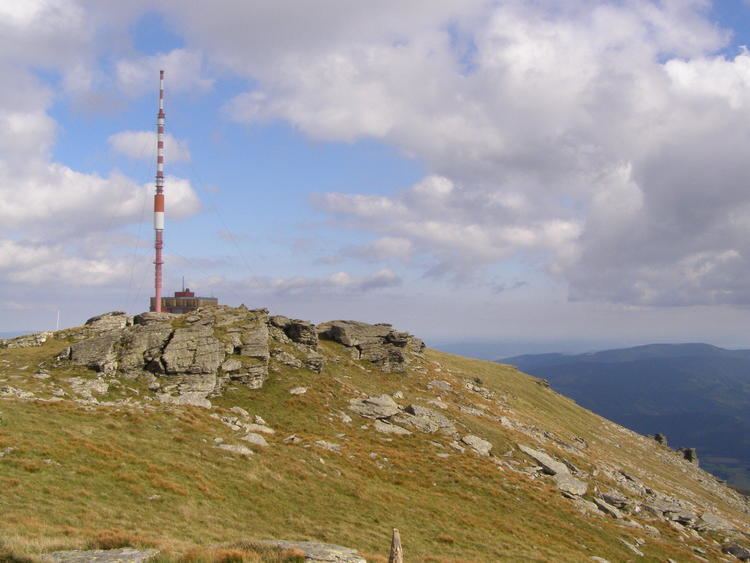Elevation 1,946 m | Prominence 756 m Easiest route Hiking | |
 | ||
Similar Ďumbier, Andrejcová, Chopok, Kriváň, Veľká Vápenica | ||
Kr ova ho a king s bald mountain
Kráľova hoľa (German: Königsberg; Hungarian: Király-hegy, literally "King's Bald Mountain") is the highest mountain (1,946 m) of the eastern part of the Low Tatras in central Slovakia. Four rivers rise at its foot: Čierny Váh, Hnilec, Hornád, and Hron. The summit, easily accessible by hiking trails from Telgárt as well as by a paved road from Šumiac (inaccessible by motor cars, except for the mountain rescue service and maintenance workers of the TV transmitter on the summit), offers a panoramic view of Spiš, the Tatras, Liptov, and the Upper Hron Valley. Largely deforested by exploitative timber harvesting in the early 19th century, its timberline was restored to its natural elevation of about 1,650 m (5,413 ft.) through the efforts of Ludwig Greiner in the second half of that century.
Contents
- Kr ova ho a king s bald mountain
- Map of KrC3A1C4BEova hoC4BEa 976 71 C5A0umiac Slovakia
- Dji phantom 3 professional kr ova ho a
- References
Map of Kr%C3%A1%C4%BEova ho%C4%BEa, 976 71 %C5%A0umiac, Slovakia
Kráľova hoľa is often depicted in Slovak folklore and Romantic poetry as a safe refuge of heroes and highwaymen, namely Juraj Jánošík. As a metaphor of homeland in folk ballads (such as Na Kráľovej holi) and particularly in one of the best-known Slovak poems The Death of Jánošík (1862) by Ján Botto, the mountain has become one of informal Slovak national symbols along with Kriváň.
During the anti-Nazi Slovak National Uprising, the partisan group Jánošík had their shelters below the top of the mountain. In 1960, a TV transmitter with a 137.5 metres tall guyed tubular mast was built on the top. There is also a weather station and a station of the mountain rescue service.
